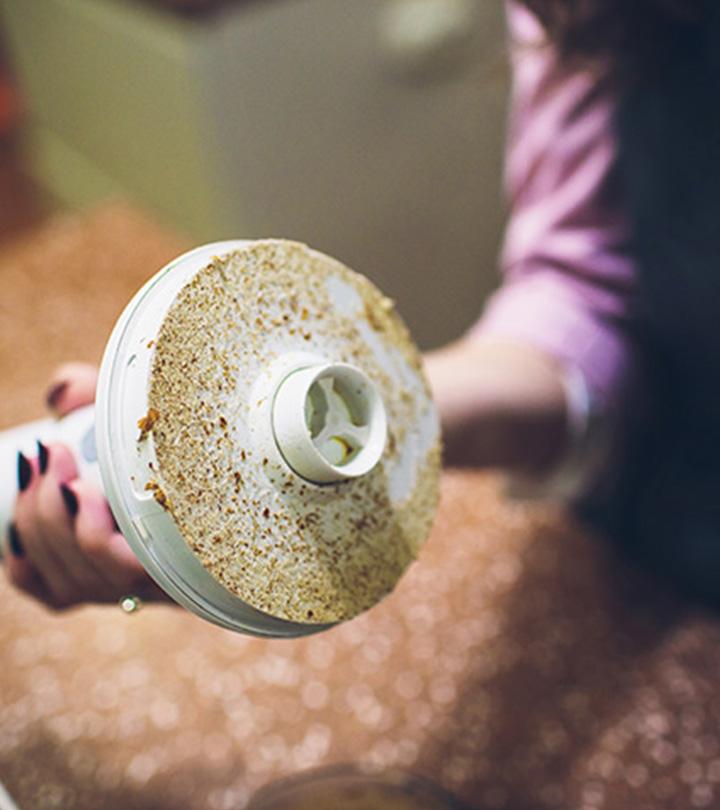
Image: Shutterstock
As new parents, the decisions you need to make are abundant, and one essential choice is what your baby should wear while sleeping. Ensuring their slumber is both cozy and secure is essential for their well-being. With varying temperatures and preferences, finding the ideal bedtime attire can be puzzling. In this comprehensive article, we’ll steer you through considerations for selecting your baby’s sleepwear, catering to warm and cold nights, while aiding you in assessing your baby’s comfort. Read on to know more!
Choosing Bedtime Clothes For Your Baby
When it comes to ensuring your baby enjoys a restful night’s sleep, the initial stride is choosing the right sleepwear. With these essential tips in mind, you can make bedtime a cozy and safe experience:
1. Opt For Breathable Fabrics
Image: Shutterstock
The choice of fabric plays a significant role in your baby’s sleep quality. Opt for lightweight and breathable materials like cotton. These fabrics promote proper air circulation, preventing the risk of overheating during sleep. Their delicate skin will appreciate the gentle touch of breathable textiles.
2. Consider Size
While adorably tiny outfits might seem irresistible, prioritize a snug yet comfortable fit. A proper-fitting sleepwear item offers both mobility and safety. Avoid overly tight garments that could be constricting or uncomfortable for your baby. On the other hand, steer clear of loose clothing that might pose a suffocation risk during sleep.
3. Avoid Strings And Loose Accessories
Image: Shutterstock
It’s essential to maintain a safe sleep environment for your baby. Ensure the sleepwear is devoid of strings, ribbons, or any loose accessories. These seemingly innocent adornments can become potential choking hazards. By keeping the sleepwear free from such items, you create a secure sleep space for your little one.
Dressing On Warm Nights
1. Light Layers
When the temperatures rise, dressing your baby in light layers becomes key. Opt for a single layer of lightweight clothing, such as a breathable onesie or a comfortable light sleeper. These clothing choices allow their skin to breathe, preventing overheating during the night. Remember, less can be more when it comes to keeping your baby comfortable in warmer weather.
2. Consider Diaper Only
In cases of exceptionally warm weather, you might find that dressing your baby in just a diaper is sufficient. However, ensure the room temperature is suitable and there are no chilly drafts that might make them uncomfortable. A diaper-only approach lets your baby’s skin breathe freely, providing natural cooling.
3. Skip Blankets
Image: Shutterstock
On balmy nights, it’s best to avoid using blankets or quilts in your baby’s crib. These items can inadvertently cover their face or body, increasing the risk of suffocation. Instead, consider opting for a light and breathable sleep sack. Sleep sacks offer the coziness of a blanket without the potential hazards, allowing your baby to enjoy a snug sleep without any worries.
Dressing On Cold Nights
When the nights turn chilly, your focus shifts towards keeping your baby cozy and warm. Here’s how you can ensure their comfort during colder evenings:
1. Layer Up
As temperatures drop, layering becomes a valuable tactic. Begin with a soft and breathable onesie or pajamas as the base layer. These provide a comfortable foundation. To amplify warmth, consider adding a sleep sack or a wearable blanket. These specialized coverings keep your baby snug without the risks associated with traditional blankets.
2. Choose Warm Fabrics
Image: Shutterstock
When the cold sets in, fabric choice becomes paramount. Opt for thicker materials like fleece or cotton blends. These fabrics offer additional insulation, helping to trap heat and keep your baby comfortably warm throughout the night. Prioritizing warm materials is a simple yet effective way to provide the cozy environment your baby needs.
3. Check The Temperature
Ensuring the appropriate room temperature is crucial for your baby’s comfort and safety. Strive to maintain the room within the range of 68°F to 72°F (20°C to 22°C). This spectrum achieves a harmonious blend of warmth for your baby while mitigating the chances of overheating. Employ a dependable room thermometer to precisely gauge the temperature and enact any required modifications.
How To Know If Your Baby Is Comfortable
Image: Shutterstock
Babies can’t verbally express their comfort levels, so it’s crucial to observe their cues:
1. Feel The Neck
Touch the back of your baby’s neck to gauge their temperature. It should feel warm, but not sweaty or overly hot.
2. Check For Sweating
Sweating can indicate your baby is too warm. Adjust their clothing and bedding accordingly.
3. Feel The Belly
Place your hand on your baby’s belly. It should feel warm and comfortable, but not excessively hot.
4. Observe Their Sleep Patterns
If your baby is sleeping peacefully and isn’t waking up frequently, it’s a sign they’re comfortable.
5. Keep An Eye On Their Face
If your baby’s face is flushed or red, they might be too hot. Conversely, if their hands and feet are cold, they might need an extra layer.
Remember that every baby is unique, and their comfort level may differ. It’s essential to adjust their sleepwear based on the room temperature and their individual preferences. By paying close attention to their cues, you’ll become adept at choosing the perfect bedtime attire that ensures your baby sleeps soundly and safely through the night.

















